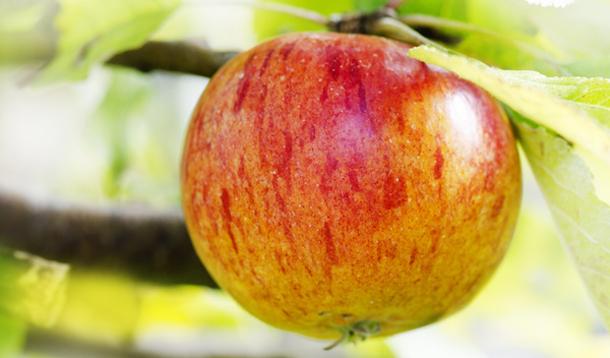
For the past nine years, the Environmental Working Group (EWG) has released an annual Dirty Dozen/Clean 15 list designed to be used as a shopping guide, so you know which fruits and vegetables contain the most pesticide residue. Pesticides are not only harmful to us, they are also harmful to the environment.
Buying organic is an individual choice—personally, I try to buy the items on the dirty dozen list whenever I can, for more reasons than just pesticide residue. But for some people, they simply can’t spare the extra money, and some just can’t find a lot of organic produce in their city/town.
But that's OK—if you can’t afford or find organic produce in your area, try these tips:
![]() Buy from local farmers markets — When we buy from our local farmers, not only do we support our local economy and a local small business owner, we also have a good chance of buying unsprayed produce. In many cases, local farmers do not spray their crops with pesticides or use chemical fertilizers, but because they are a small operation, their products cannot be officially certified organic. The process for being certified organic is lengthy and costly—a cost many small farms cannot afford. Talk with your local farmers to find out how they treat their crops.
Buy from local farmers markets — When we buy from our local farmers, not only do we support our local economy and a local small business owner, we also have a good chance of buying unsprayed produce. In many cases, local farmers do not spray their crops with pesticides or use chemical fertilizers, but because they are a small operation, their products cannot be officially certified organic. The process for being certified organic is lengthy and costly—a cost many small farms cannot afford. Talk with your local farmers to find out how they treat their crops.
![]() Grow your own — In Canada, we are limited to what we can grow (but there is still a lot we can grow!) and we only have a very small window to do it. If we do, what we can plant will not last long—but something is better than nothing. If you can, plant your own garden. This way, there are no questions—you will know exactly how it is being grown and how it is being tended to.
Grow your own — In Canada, we are limited to what we can grow (but there is still a lot we can grow!) and we only have a very small window to do it. If we do, what we can plant will not last long—but something is better than nothing. If you can, plant your own garden. This way, there are no questions—you will know exactly how it is being grown and how it is being tended to.
The produce in this list were found to contain the most pesticide residue, so if possible, you should buy organic. When compared to the 2012 list, three vegetables were added: cherry tomatoes, hot peppers, and summer squash/zucchini and three were removed: blueberries, green beans, and lettuce.
1. Apples
2. Celery
3. Cherry Tomatoes
4. Cucumbers
5. Grapes
6. Hot Peppers
7. Imported Necatrines
8. Peaches
9. Potatoes
10. Spinach
11. Strawberries
12. Sweet Bell Peppers
The two following crops did not meet traditional Dirty Dozen™ criteria but were commonly contaminated with pesticides exceptionally toxic to the nervous system:
These fruits and vegetables were found to contain the least amount of pesticide residue and do not necessarily need to be bought organic. Only one change was made when compared to the 2012 list: watermelon was removed papaya was added.
1. Asparagus
2. Avocado
3. Cabbage
4. Cantaloupe
5. Corn
6. Eggplant
7. Grapefruit
8. Kiwi
9. Mangos
10. Mushrooms
11. Onions
12. Papayas
13. Pineapples
14. Frozen sweet peas
15. Sweet potatoes
![]() Bookmark this page or take the list with you whenever you shop by downloading one of the following:
Bookmark this page or take the list with you whenever you shop by downloading one of the following:
Download a portable wallet version of the list
Download the Dirty Dozen App for your iPhone or iPad
Download the Dirty Dozen App for your Windows Phone
Download the Dirty Dozen App For Your Android
![]() Notes:
Notes:
* It’s always a good idea to wash your produce before eating it, but this is not enough to get rid of pesticide residue. Some fruits and vegetables absorb pesticides past the skin. The EWG peels and washes their produce before they do their testing and come up with their rankings.
* The lists are based on US produce, so they may not 100% reflect what is happening here in Canada, but since a lot of our produce is imported from the US and our farming practices are similar, it’s a good idea to still use the list as a guideline.
For more info on the Dirty Dozen/Clean 15 lists and pesticides, check out the FAQ section on the EWG website.
Do you go out of your way to stay away from the produce on the Dirty Dozen List?